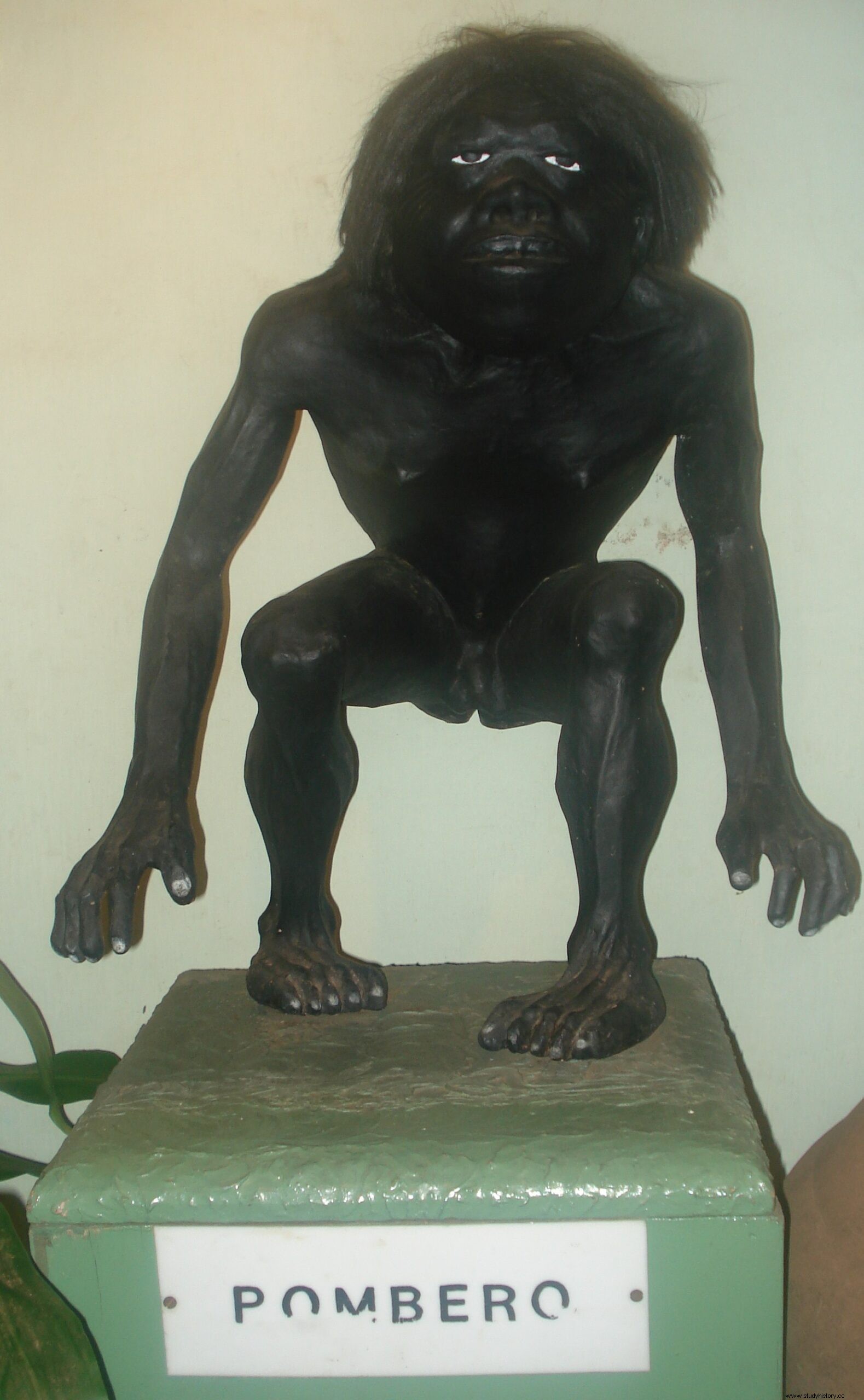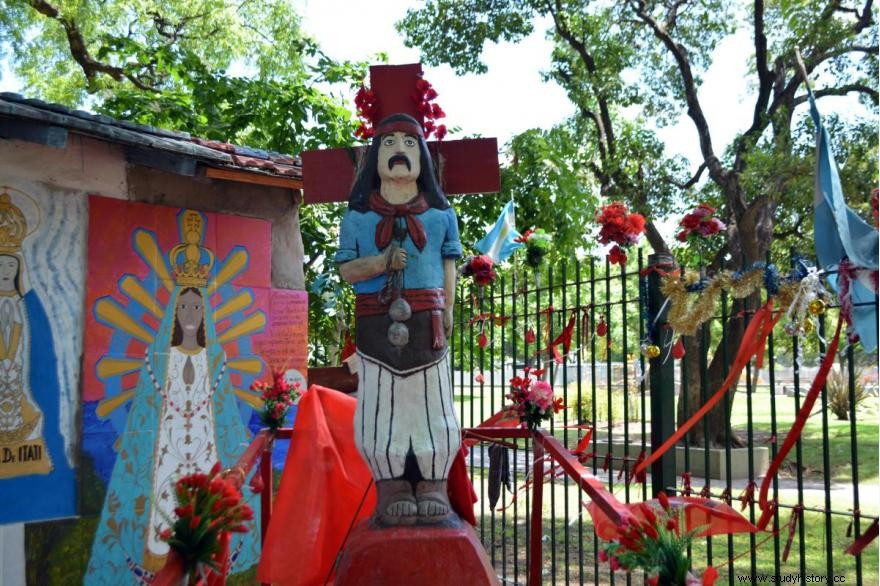Like all other countries, Argentina has its own share of myths and folklore. Most of the rich oral history stems from the many indigenous tribes living in the country. Many of these stories now span countries and cultures as tribes migrate to different countries. A story or myth can have different versions, because like all ancient folk tales, these were passed down from generation to generation through oral words. Small variations occur according to age, strain and location. And every storyteller in a society has its own unique way of telling a story, so add more spice to the story!
The bad light in Mendoza

In the city of Mendoza in northern Argentina, a light appears a few meters above the ground during the night in the mountains between Uspallata, Puente del Inca and Las Cuevas. Country people, motorists, mountain dwellers and most of all, truck drivers claim to have seen the eerie light on their regular night trips and have attributed some of the superstitious factors to the phenomena. For the natives of Argentina, the light is known as luz mala or the bad light. It appears above the ground and floats for a few minutes before disappearing. It is too far for anyone to investigate, and in any case, the natives' belief in evil spirits keeps them from doing so. The light is enough to distract the natives and night travelers.
There are a few versions of the legend of this light. Many people claim that it is an evil fireball of fluorescent red, blue, white and green that is chasing lonely travelers. Others say that sometimes the light is only white, which means good luck to the person who sees it, while on other occasions it looks green or red, in which case the person should run for their lives since it is chasing them. In case they survive, they will be cursed with a lifetime of bad luck and be convicted. The natives claim that the light is the soul of those who have lost their lives in an unjust way and have been ridden off without a proper burial in a cemetery. The souls come to the surface of the land to seek revenge, and this means that it will attack and claim the soul of everyone who unfortunately appears at the time of the appearance. Many of those who settled in the area during the colonial era believe that it is the soul of the indigenous people who were mercilessly slaughtered for their land. To avoid revenge for luz mala, the natives begin to pray and bite into a knife sheath.
The Legend of El Pombero
The Guaraní people living in Argentina firmly believe in the legend of El Pombero, a mythical nocturnal forester. This little troublemaker is known by various names such as Pÿragué (hairy feet), Kuarahy Jára (sun master) and Karaí Pyhare (lord of the night). The legend is an important part of the tribe's culture.

Although the descriptions of Pombero have small variations among the communities in the tribe, he is often attributed to being nocturnal, short and ugly, having very short arms with hairy hands and feet. His hairy feet give him the opportunity to sneak up on people silently and touch them with his equally hairy hands, which makes them tremble with fear. Pombero usually live in forests and stalks in rural areas, and often live in an abandoned house. In the forest, the tribe believes that the Pombero can mimic the sounds of all the forest animals, especially the songs of the night birds. Because of this, the tribe sees him as a bird protector from children who hunt them with slings. According to many, he whistles before he appears, and therefore not many whistle as they are afraid of being a target of his anger. His usual targets are farmers who tend cattle and farms in the forest and young women who walk alone. His mischief activities include unleashing cattle, scaring horses and getting them to throw riders, stealing chicken, eggs and honey and spreading rice, corn and other farm products. He impregnates women either by touching them or seducing them. Babies born dark, ugly or hairy are said to be Pombero's children. To keep Pombero in check, people omit gifts such as rum, cigars and honey. Happy, he will refrain from causing problems.
Luison, the werewolf
Another legend from the Guaraní culture is that of Luison, Luisõ or Lobison, a monstrous creature. According to Guaraní culture, the seventh son of any pair will always be cursed and become a werewolf, and that was the situation with Luison.

The custom dates back to 1907. Everything would be normal until the first Friday after the boy's 13th birthday. That night, the werewolf shows his true nature, and transforms the child into a monster at midnight on each full moon. Before he returns to his human form, he will hunt and kill everything that comes before him. His main diet consisted of unbaptized babies, excrement, or the flesh of those who died recently. With a single bite, it is said that he also infects others. According to Guaraní mythology, Luison was the child of Tau, an evil spirit, and Kerana, a mortal woman. For those who believe in the legend, Luison behaves more like Grim Reaper whose appearance meant that everyone who comes in contact with him will die. The locals feared this legend so much that they started killing their seventh born sons. In 1907, the Argentine president began adopting these babies in an attempt to stop this practice. The president insisted that this would cure the curse. In 1973, the tradition was also extended to the seventh daughter. In modern times, the curse of the seventh child is seen as a blessing since it meant that it would be adopted into the president's family.
The Legend of Pascana or Cardon

In the province of Tucumán in northern Argentina, Amaicha del Valle is a showdown with its own stories and legends. One such story is the story of Pascana or Cardoon. The legend tells the story of two fateful lovers of the indigenous people in the settlement. There are several versions of the story.
One version claims that Pascana was the beautiful daughter of the chief of one of the tribes, while Quehualliu was a warrior of another tribe. They fell in love, much to the chagrin of Pascana's father, who wanted his daughter to marry someone else. When the two lovers found out, they decided to run to the valleys. When the chief found out about his daughter's actions, he decided to capture the two. When he gathered the men in his tribe, he went out and reached the valleys at night. It was a full moon night, and Pascana and Quehualliu managed to see the men in the distance. They asked Pachamama, the goddess of the land, to save them. The goddess sinned and opened a hole in the mountain, and the two lovers hid inside. The chief and his men were determined to capture and punish. At dawn, Pascana and Quehualliu were transformed into a cactus or kardon that now scales the valleys.
According to another version, Pascana's love was named Kewayl Amatua. They could not be together because he belonged to the enemy tribe of Pascana's father and therefore decided to flee to the valley. In the valley, it was the devil they turned to for help. The devil decided to help them, but it came with a certain price - to hide them they had to give him their soul. When they refused, the devil turned them into stinging cacti. The thorns symbolize the lovers who protect each other from anyone who tries to destroy them.
The Legend of Curupi

The myth of Curupi is similar to that of Pombero and a legendary creature in Guaraní mythology. Like Pombero, Curupi is said to be short, hairy and disgusting. He lives in the thick forests and is the master and protector of wild animals. A feature of Curupi that sets him apart from Pombero is his long penis. The length of it made him wound it around his waist like a belt. At one point, Guaraní worshiped him as the spirit of fertility because of his phallus. Now he is mostly blamed for unwanted or unexpected pregnancies by single women or even women whose husbands were infertile. The length of Curupis phallus allows him to stretch it out through doors and windows and impregnate sleeping women without stepping foot in their homes. Any child born tiny, hairy or ugly is said to be Curupi's child. The disappearance of young women is attributed to this demonic creature, who is said to steal them to the forest and rape them. Today, the legend of Curupi has faded more into the background while Pombero takes the lead.
Gauchito Gil

Gauchito Gil is a religious figure in Argentine culture. Argentina's own Robin Hood and more of a dubious myth, his real name was Antonio Mamerto Gil Núñez and the natives honored him as a symbol of bravery. The stories surrounding Gauchito Gils are varied. Gauchito became romantically involved with a wealthy widow and ranch owner, Estrella Díaz de Miraflores. Such a connection between an upper-class society lady and a humble farmer was not kindly seen by Estrella's brothers or the local police chief, who was in love with the lady herself. A conspiracy was framed against Gauchito to accuse him of theft, but he could be arrested, he fled and joined Corrientes' war against Paraguay. Stories of his courage spread far and wide, and he returned home as a war hero, only to be recruited again to fight in a civil war. He left the army with some friends and roamed the hillsides and stole from farms to survive. However, he was soon called Robin Hood since he stole from the wealthy and distributed the supplies among the poor. He earned the respect and protection of the local farmers who even believed that he could cure disease and resist bullets.
It was events during Gauchito's capture and execution that further cemented him into a mysterious figure with supernatural powers. When he was captured in the forest, an impatient guard decided to execute him there and then before a proper trial. Gauchito asked the guard to wait and claimed that a letter of forgiveness was on his way, along with the news that the guard's son was ill. The guard thought it was just a bluff and cut his throat. Shortly afterwards, another guard arrived with a letter of forgiveness and the news that his son was ill. Despite murdering Gauchito just minutes before, the panicked guard of the dead cowboy asked his son to recover. The son recovered and the guard arranged for a proper burial of the cowboy. Now he is generally seen as a regular weekend in Argentina. January 8 th Every year, thousands of pilgrims travel to his tomb. Prayers and celebrations take place during the day.
Nahuelito, the lake monster

Like the Loch Ness monster, Nahuelito is a lake monster that lives in Lake Nahuel Huapi in Argentina. Locals describe it as a giant snake or a plesiosaur with a hump. The story dates back to the indigenous people who inhabited the area before the colonial era.
The early explorers began to obtain reports from the natives of encounters with a strange aquatic creature. In 1897, the director of the Buenos Aires Zoo, Dr. Clemente Onelli, began receiving stories of a huge, strange creature living in the lake. Then in 1910 George Garret was working near the lake when he spotted a creature about 400 meters away. What he could see was between 5 and 7 meters long, and reached 2 meters above the water. It was after consultation with the locals that Garret became acquainted with Nahuelito. Years later, he organized an expedition to the lakes to search for the lake animal. Since 1922, Beunos Aires Zoo has been trying to gather evidence to prove the existence of Nahuelito, but in vain. Despite our thoughts on such a lake monster, you can not ignore the stories surrounding it. For example, in 1960 the Argentine Navy claimed to have been chasing an unidentified underwater creature in the lake for more than fourteen days. In 1988, photographs of Nahuelito appeared in a magazine. The man who took the photographs is anonymous to this day and claims that it was not his imagination or a whimsical form. Like the Loch Ness monster, it makes us think about the stories of Nahuelito:truth or myth?
Myths in Argentine Culture
The stories and histories are part of all social cultures in Argentina. They play an important role in the identity building of indigenous peoples, whose fervent belief in myths causes them to attribute miracles and canonize real people (like Gauchito Gil) with offerings and shrines, while holding evil spirits responsible for unfortunate events (like Pombero and Kurupi). ) When the natives migrate to different countries, these stories now span different other cultures.
